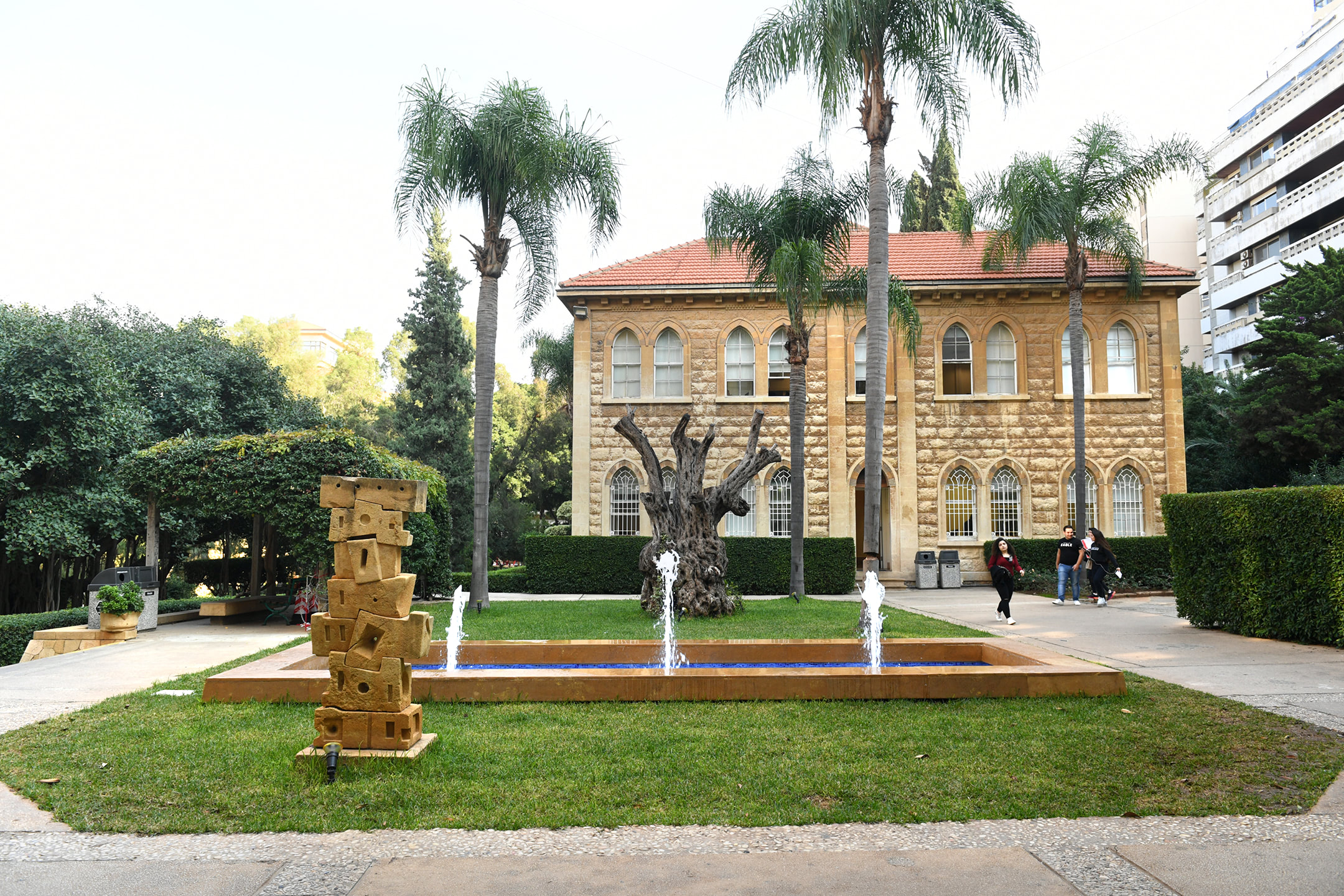Saloua Raouda Choucair (AA ’38), 1916–2017
Hailed as a pioneer of abstract art in Lebanon, Saloua Raouda Choucair was born in 1916 in the Beirut neighborhood of Ain El Mreisseh. Her father Salim Rawda died of typhoid fever a year later, leaving behind his wife, Zalfa Najjar, to raise Saloua and her older siblings, brother Anis and sister Anissa in times of war and famine.
Choucair attended the Ahlia School and showed artistic talent at a young age, designing posters and caricatures that were published in the school’s newspaper. After graduating from high school, she enrolled in the American Junior College for Women, as LAU was known back then, and graduated with an associate’s degree in natural sciences in 1938. It is believed that her fascination with abstract art is rooted in her initial field of choice: science.
In the 1940s, Choucair was a member of the Art Club at the American University of Beirut (AUB) where she had taken philosophy and history classes. It was there that she met Lebanese painter Moustapha Farroukh, who published one of her drawings in the club’s Art Gazette. At AUB, Choucair helped organize events and exhibitions and worked at the library. She also took her first formal art lessons with Lebanese modern painter Omar Onsi in 1942.
From 1948 to 1951, she lived in Paris where she studied abstract art at the École Nationale des Beaux-Arts. She also briefly joined the studio of French cubist painter and sculptor Fernand Léger and worked at L’Atelier de l’Art Abstrait. Her early modernist paintings, inspired by Léger’s subject matter, reveal the geometric style that would distinguish her sculptures.
In 1953, she married Lebanese journalist Youssef Choucair and they had one daughter, Hala Schoukair, who became an artist in her own right.
Choucair expanded her artistic application by learning enameling-and-jewelry-making techniques in the United States for two years before returning to Lebanon, where she exhibited regularly in Beirut, and taught sculpture at the Lebanese University from 1977 to 1984.
The long list of venues that exhibited Choucair’s work includes some of Beirut’s most prominent cultural hubs at the time, including the UNESCO Palace in 1962, the Glass Pavilion of the Ministry of Tourism in 1974, Université Saint Joseph in 1952, Contact Art Gallery in 1977, Al Montada Gallery in 1988, Al Nadwa Gallery in 1993, and Maqam Art Gallery in 2010.
Choucair received several accolades from the Lebanese Ministry of Higher Education, as well as the National Council of Tourism. In 1988, she was decorated with Lebanon’s highest honor, the National Order of the Cedar, with the rank of “Commander.”
Choucair’s work received global exposure with the establishment of the Saloua Raouda Choucair Foundation in 2002. Her work was displayed in a retrospective exhibition at the Beirut Exhibition Center in 2011, followed by a solo exhibition at the Tate Gallery in London in 2013.
Her art pieces have also been shown at the Mathaf Museum of Modern Arab Art in Doha, the Art Institute of Chicago, Centre Pompidou in Paris, the Guggenheim in Abu Dhabi and the Sursock Museum in Beirut, where a special exhibition was held in celebration of her 100th birthday on June 24, 2016.
Following a prolific career and close to seven decades’ worth of multimedia artwork—gouaches, sculptures, textiles, and jewelry—Choucair passed away on January 26, 2017, in Beirut.
Choucair’s legacy endures in her eclectic artwork and a characteristic creativity that continues to inspire work by other artists and art researchers. Most recently, LAU’s own Associate Professor and alumna Yasmine Nachabe Taan authored a book on Choucair’s unique approach to art and design.

Choucair’s “Poem” will continue to inspire generations at her alma mater